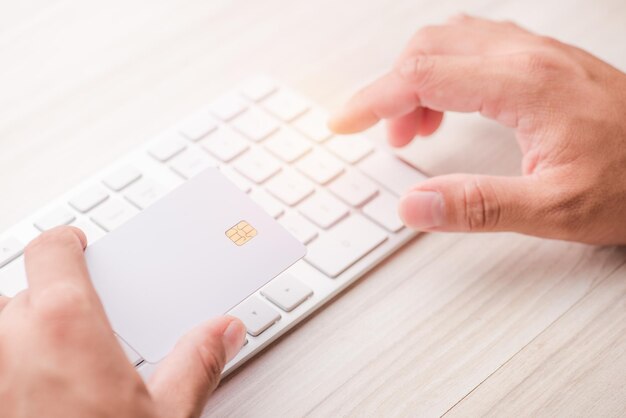Understanding How Long Credit Card Debt Can Affect You
Credit card debt is a common financial hurdle faced by many. From unexpected expenses to lifestyle habits, various factors contribute to accumulating credit card debt. But how long does this debt linger, and how can it impact your financial health over time? Let's explore this topic in depth, providing comprehensive insights and practical tips to help you understand and manage your credit card debt effectively.
The Lifecycle of Credit Card Debt
📅 How Debt Accumulates
Credit card debt can accrue quickly due to high interest rates and late payment fees. Many cardholders start with manageable balances, but situations such as unforeseen medical emergencies, job loss, or even benefits of credit reward programs can lead to increased spending and higher balances.
🏦 Minimum Payments: The Long Road
Paying just the minimum balance each month seems like a relief, yet this approach can stretch your debt across years or even decades. Minimum payments typically cover interest and a small portion of the principal balance, keeping your debt cycle ongoing.
📊 Impact on Credit Score
Your credit utilization ratio, or the amount of credit used versus the total credit available, significantly affects your credit score. High balances reduce your score, impacting your ability to secure loans, mortgages, or favorable interest rates. Consistently managing your debt and maintaining a low credit utilization can improve your score over time.
Strategies for Debt Management
💡 Crafting a Repayment Plan
Creating a structured repayment plan is pivotal. Prioritize high-interest debts, and allocate extra income towards reducing these balances. This not only reduces the overall interest paid but also accelerates debt elimination.
Key Steps for an Effective Repayment Plan:
- List all debts with interest rates and balances.
- Determine your disposable income for debt repayment.
- Focus payments on the highest interest debt while maintaining minimum payments on others.
- Reassess and adjust the plan regularly.
🚀 Debt Reduction Methods
1. Snowball Method
This technique involves paying off the smallest debts first, creating momentum as you accomplish small victories.
2. Avalanche Method
Focus on eliminating debts with the highest interest rate first, minimizing the total interest paid over time.
Both strategies have their pros and cons, and the choice depends on personal finance habits and psychological preferences.
🔄 Consider Debt Consolidation
Debt consolidation involves combining multiple debts into a single loan with a lower interest rate. This can simplify monthly payments and potentially reduce the time needed to pay off the debt if managed responsibly. However, it's essential to be cautious of fees and the risk of accruing more debt.
Legal and Financial Implications
⏳ Statute of Limitations on Credit Card Debt
Credit card debt doesn't vanish until it's paid off, but the legal obligation to collect it may have a deadline. Each state has different statutes of limitations, usually ranging from three to ten years. After this period, collectors can no longer sue you over the debt, but this doesn't erase the debt itself.
📄 Bankruptcy: A Last Resort
Bankruptcy might seem like an escape from overwhelming debt, but it has long-lasting effects on creditworthiness and asset management. Consider it only after exhausting other strategies. Chapter 7 and Chapter 13 bankruptcy offer different approaches to discharging or restructuring debts, each with unique consequences and conditions.
🚫 Protection from Debt Collection Harassment
The Fair Debt Collection Practices Act (FDCPA) protects consumers from abusive debt collection practices. You have the right to dispute debts, cease collector contact, and have accurate credit reporting. Understanding these rights can significantly reduce stress and improve your negotiation capabilities with collectors.
Cultivating Financial Habits for Debt Prevention
📈 Budgeting for Sustainable Finances
A budget helps you track expenses, ensure you're living within your means, and allocate funds effectively. Tools like spreadsheets or apps can automate this process, providing real-time insights into spending habits and potential areas for savings.
💳 Wise Credit Card Use
Use credit cards as a tool to build credit rather than as a substitute for cash. Opt for cards with low interest, beneficial rewards, and manageable credit limits that align with your financial capacity.
🤔 Embracing Financial Literacy
Education is crucial in preventing debt accumulation. Many organizations offer resources, workshops, and courses on financial literacy, covering topics like budgeting, investing, and credit management.
Visual Summary: Quick Tips for Managing Credit Card Debt
🔹 Prioritize High-Interest Debt: Focus your efforts on the debts costing you the most.
🔹 Consider Consolidation: A single loan may reduce your interest rates and simplify payments.
🔹 Understand Your Rights: Familiarize yourself with consumer protection laws.
🔹 Create a Budget: Keep track of your expenses to avoid future debt.
🔹 Engage in Ongoing Education: Financial literacy can empower and inform your decisions.
Looking Ahead: Building Financial Resilience
The journey with credit card debt may be complex, but proactive management can greatly reduce its long-term impact. Understanding how long credit card debt lasts involves recognizing the legal, financial, and personal factors influencing your journey to financial freedom. By embracing structured repayment plans, exploring strategic debt reduction methods, and cultivating sound financial habits, individuals can pave the way to a more secure and financially sustainable future. Remember, every financial decision today shapes your financial freedom tomorrow.

Related Topics
- Am I Responsible For My Husband's Credit Card Debt
- Are Credit Cards Unsecured Debt
- Can a Pension Be Garnished For Credit Card Debt
- Can Credit Card Debt Be Forgiven
- Can I File Bankruptcy For Credit Card Debt
- Can I Go To Jail For Credit Card Debt
- Can I Negotiate Credit Card Debt
- Can I Negotiate My Credit Card Debt
- Can I Still Use My Credit Card After Debt Consolidation
- Can I Take a Hardship Withdrawal For Credit Card Debt